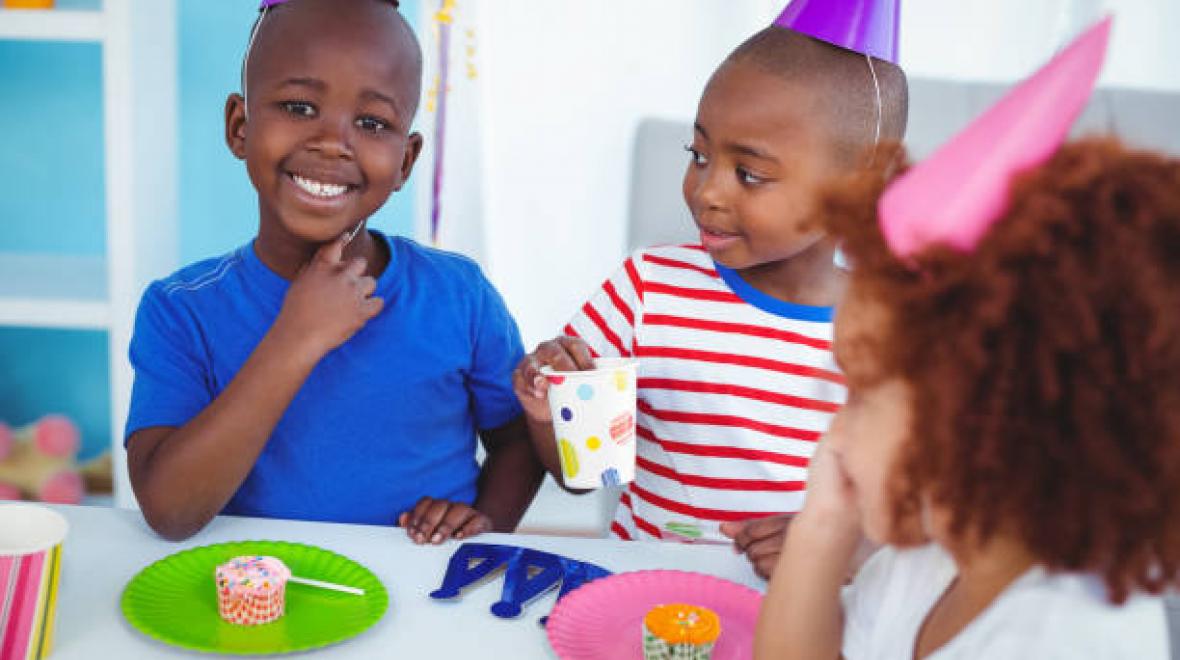
If you’re planning a party for a child with autism or sensory processing challenges, or planning to welcome guests with such issues, it helps to be sensitive to their unique needs. Here is a list of ideas to help increase enjoyment and to prevent meltdowns, tantrums or shutdowns:
1. Give advance warning and information.
Use a social story, visual schedule or sequence, and create a picture book to reduce the party’s element of surprise. You could also show pictures of the party venue and who will be there. Try role-playing in anticipation of situations that may arise during the gathering. Role-play could include following directions and the practice of questions that may come up at the social event.
2. Find an appropriate, adaptable venue.
Check to see if local venues such as aquariums and zoos have sensory-friendly options. KidsQuest Children's Museum and AMC Theatres are just a few local venues that host sensory-friendly days when noise levels are reduced and bright lighting is avoided. We Rock the Spectrum Kid’s Gym Indoor Playgrounds offer a special party package with a trained staff member to ensure your event is less stressful. Consider reserving a picnic shelter near a local sensory playground.
Room deodorizer can be overwhelming to inhale, so discuss this with the venue director or your housecleaner before booking the place or setting up the party at a home.
Find a quiet, private spot as a backup for meltdowns or rising anxiety.
Carry a pair of noise-canceling headphones in your bag.
Try to avoid arranging the party at a new venue such as a bowling alley or bounce house. Instead, consider hosting the party at a familiar place, such as home or a destination your child has visited previously.
Outdoor parties are especially great, as there is a reduced risk of offensive smells and contained noise, while pool parties are good for building motor skills.
3. Plan food carefully and think about texture.
Focus on the texture, temperature and taste of the food that your child consistently enjoys, and serve it before and during the party. Textures might include crunchy, smooth, creamy, soft, hard and sticky. Tastes include salty, bitter, sweet, sour or tart.
If your child becomes sleepy after consuming a particular snack, skip it to save energy for the party. Include gluten-free and casein-free food and drinks since there is a high rate of gluten and dairy intolerance in autistic kids. Baby carrots, celery sticks and diluted fruit juice are healthy options.
Consider making pound cookies — pounding away could help decrease excess energy prior to a party! Prepare them by counting out candy pieces, placing the candy in a sealed plastic bag, and “bashing” it with a wooden mallet or small hammer. Remove the crushed candy from the plastic bag and incorporate the pieces into cookie dough before baking them in the oven. Pound cookies reinforce counting skills and teach your kids to participate in hosting. Praising your child for helping with the cookies could also be a great conversation starter at the party.
4. Keep the noise volume appropriate.
Pick quality balloons and hang them out of kids’ reach to avoid accidental loud, annoying popping. Hot lightbulbs, heated cars and rough ceilings can prick balloons. Light-colored balloons are less likely to pop than darker balloons, since lighter balloons absorb heat slower than darker objects.
Avoid noise-makers like egg shakers, mini flutes, party blowers, hand-clappers or kazoos. There are hundreds of quieter themes to choose from, such as cartoon characters, Legos, trucks and more. Offer a limited number of theme choices to your child, as too many options kick anxiety into gear.
5. Opt for previously tested (and appropriate) activities.
Choose activities your child has already tried and enjoyed. Beaded empathy bracelets are fun to make, with each colored bead representing a different emotion. Yellow beads symbolize happiness, while blue beads symbolize relaxation. Calm-down bottles — made with water, clear glue, glitter and food coloring — are calming to the sight and touch.
Sensory bin tubs provide hours of fun. Fill plastic tubs with squishy and soft water beads or sand, marine animals and blue-dyed water to create a beach theme.
Colored dry rice, foam or cloud dough feel soothing to the hands. Invite an assistant or babysitter your child knows and likes to help at the party.
Teens with autism, Asperger's or sensory processing disorder (SPD) might enjoy music therapy, puzzles, beading, farm visits or yoga.
Lighting candles on the cake or singing songs may be too much for some kids, so you may choose to skip these activities. You could whisper songs as an alternative to skipping songs completely.
Consider requesting donations of canned food or supplies to a homeless shelter or animal shelter in lieu of receiving gifts. If you opt to receive gifts, perhaps tell your child what gifts to expect ahead of time. Opening gifts in front of guests may create anxiety.
You could pass out autism awareness shirts, bracelets, stickers and bags as party favors. Steer clear of sugary party favors; try temporary tattoos, bubbles, slime, playdough or art supplies as a thank-you to guests for coming. Parents will welcome $5 gift cards to a bookstore or healthy fast food spot in lieu of items that may end up in the trash.
6. Carefully plan your guest list.
You may wonder if you should invite other special-needs kids only, or have a mix of kids. Go with what you think is best for your child. Some parents invite friends from speech and occupational therapy or from enrichment classes such as sports, music or art.
As you wear your party-planning hat, ponder who to invite, the number of guests, the best venue and the most appropriate activities. Always keep in mind the fact that each child has different sensory needs.
7. Be compassionate to yourself.
Take care of yourself! Resist comparing your child to other kids at the party, in terms of reaching milestones for their age. Regardless of how the party turns out, reward your hard work with a massage, time to catch up on pleasure reading, a chat with an old pal or whatever brings you happiness.
Editor's Note: This article was originally published in Autism Parenting Magazine and republished with permission.











